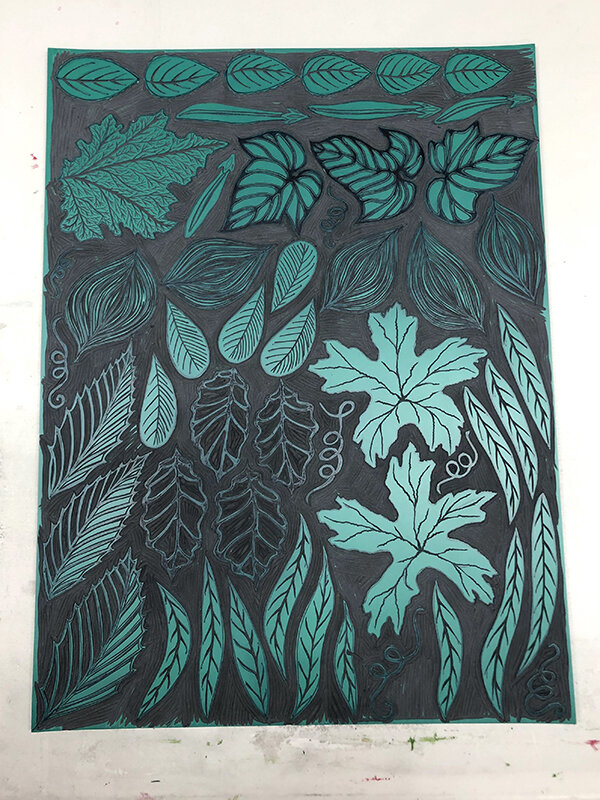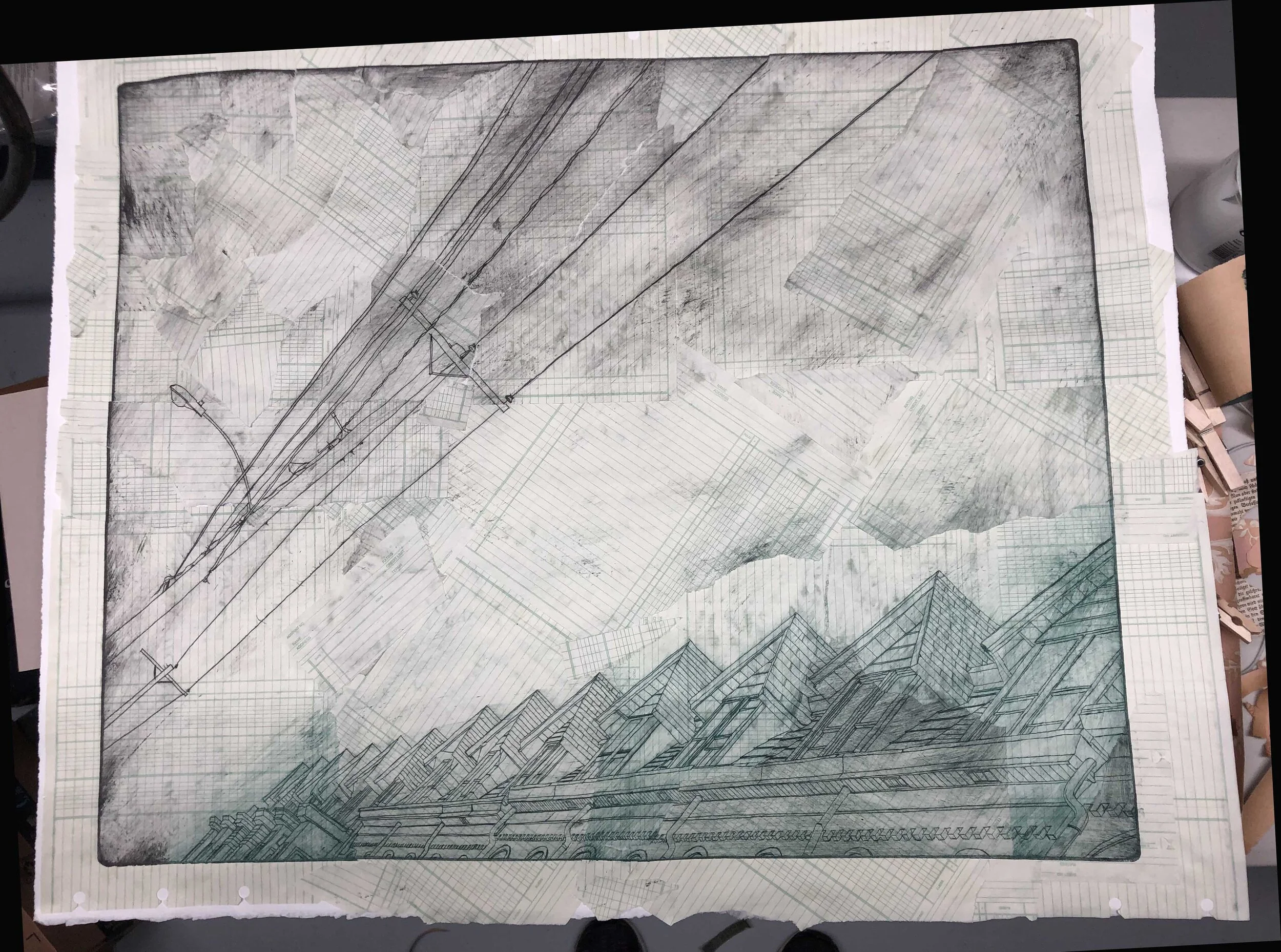Soft linoleum block with body parts
Natalie Schorr - 2020
I am working on some mixed media collage pieces that use mostly elements I have made, as opposed to elements I have found. Not that one is better than another, I guess they just express my current state of thinking more accurately. In doing this, I have gathered together several old relief cut blocks and started creating some new linocuts of body parts and other elements that may be useful over and over.
These body pieces are proving to be very inspirational for me. I picked up this soft cut linoleum block from Dick Blick. It’s fairly thick, so I carved both sides. The opposite side is carved mostly with manicules. I printed them up in an array of colors, and I’ll use them over and over.
This weekend I also carved up a large lino plate with just leaves. They are another element I can see using a lot, so I drew out a bunch of different shapes. I hope to start printing with these later
Linocut block with leaf shapes
Natalie Schorr - 2020
I think you will see these leaves and body parts a lot in the coming months.


![Leaning Rowhouses [green]](https://images.squarespace-cdn.com/content/v1/5882c79429687f5efc6ab887/1600302236930-TM4NOZ9A80T161X76BRZ/Schorr_Natalie_12+smaller.jpg)


![Leaning Rowhouses [pink]](https://images.squarespace-cdn.com/content/v1/5882c79429687f5efc6ab887/1600302953675-5S6NUQJ4VSV76OT11YPL/Pink+Rowhouse+smaller.jpg)